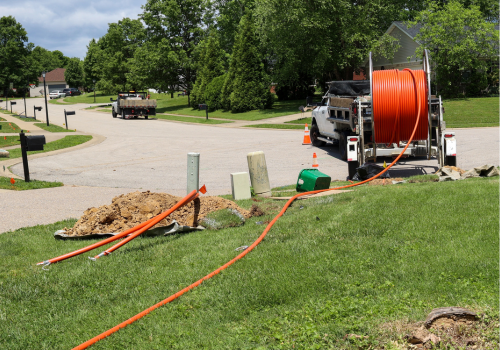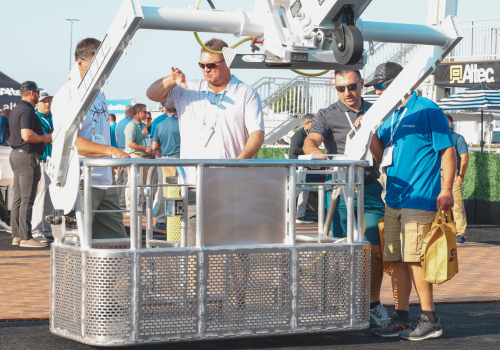Any company who owns equipment is aware of the importance of properly maintaining it. When you own a lot of equipment, maintenance costs increase.
Companies choose to either outsource their maintenance or keep it in-house. Both have benefits and drawbacks. Below are benefits to each, as well as the criteria you should use to determine which method is best for your company.
In-house maintenance
When you perform maintenance in-house, you have control over the people who are responsible for the maintenance of your fleet. You can schedule maintenance of a machine at a time that works best for your company. You can ensure timely, reliable, and consistent maintenance service. And you have complete transparency over the maintenance of your fleet, so you can be more confident in the trust you put in the opinions of the mechanics and technicians who care for your equipment.
The flip side to in-house maintenance is you have to create that infrastructure—purchase a garage, buy the necessary tools, and hire mechanics and technicians. This can be a large capital investment. Plus, it can detract your company from pursuing more profitable actives and divert resources away from other capital investments.
Outsourcing maintenance
When you outsource maintenance, you pay just for the services you utilize when you need them. You don’t need to work on hiring, training, and retaining mechanics, which can be challenging when these activities are outside of your marketable operations.
However, when you outsource, you’re at the mercy of the service provider. You may not be able to have your equipment serviced at your preferred time. And there’s little you can do to verify whether the company performing maintenance on your fleet is honest and accurate.
How to choose a maintenance method
When choosing whether to outsource your fleet maintenance or keep it in-house, there are several factors you should consider:
Maintenance needs: The more maintenance your fleet needs, the more beneficial it is to bring maintenance in-house. A lot of this is a proxy on how many pieces of equipment need maintenance—you’re not going to hire a mechanic for one machine—but also the application of the equipment and how they are being used affects component wear, and therefore maintenance needs.
Fleet location: If your fleet is located within a small geographic area, an in-house maintenance program may be worthwhile. If you have to truck in equipment long distances, that adds to your maintenance costs, maintenance turnaround times, and logistics.
Corporate priorities: If your company wants to make any large capital investments, acquire another company, or save money for future purchases or because of an expected downturn in the economy, it’s better to outsource.
For some companies, a hybrid option works best. Numerous companies have one or two people on staff who handle the majority of the maintenance and small repairs, then outsource major repairs. Companies that have the majority of their equipment in close proximity, but a few pieces working remotely may outsource the remote equipment while maintaining the majority in-house. Also, companies who have niche equipment may outsource the maintenance on those few pieces while performing in-house maintenance on the majority of their fleet. Similarly, companies who have work trucks may have auto mechanics to deal with truck maintenance issues and then outsource the maintenance of the digger derrick tool, bucket lift or concrete mixer to a company who services heavy equipment.
The best of both worlds
Numerous original equipment manufacturers offer dealership maintenance contracts. These contracts provide a fixed cost for equipment maintenance, as well as machine health data tracking and component wear predictive analytics.
Volvo Construction Equipment provides three service contract levels—blue, silver, and gold.
“For the Blue service contract package, all equipment maintenance is included, such as fluids and filters, as well as fluid analysis, maintenance reminders, Active Care, and CareTrack,” says Jose Rasalas, Head of Product Management for Repair and Maintenance Services Globally, Volvo Construction Equipment. “Active Care, which is branded Active Care Direct in North America, monitors machine health while CareTrack tracks machine data.”
Silver adds an extended care coverage that includes powertrain and related components and the hydraulic system. Gold is a top-tier package that provides full machine coverage except wear and tear components.
“Customers state having a true trend analysis of how major components are performing is extremely beneficial to them,” says Rosalas. “It allows us to provide the customer with real-time information about how components are deteriorating over time. And we are using AI for predictive analytics, so we can establish maintenance trends earlier, then notify customers and dealers of potential issues. This will decrease the total cost of ownership of that equipment.”
By using a dealership maintenance program, you get the benefits of both an in-house and outsourced maintenance program. You have the predictable costs and transparency of an in-house program, while having the stronger cash flow and financial flexibility of an outsourced maintenance program. The service contract provided by the dealer provides the predictable maintenance costs while the machine health monitoring provides transparency. And, because the physical work is outsourced, you don’t have to buy a property and equipment or hire, train, and retain the necessary staff.
Subscribe to The Utility Expo monthly newsletter to receive more industry insights like this.
Read Next
Four Steps to Better MEWP Preventative Maintenance
Preventative Maintenance Tips for Digger Derricks
Emergency Response Checklist: 9-Point Plan To Improve Disaster Readiness












